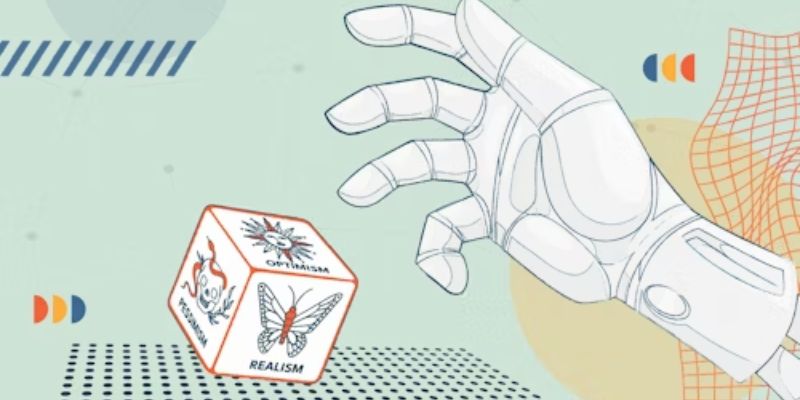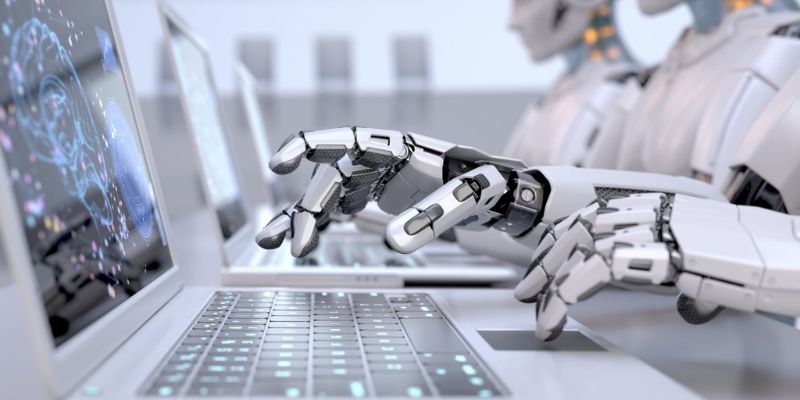Barriers to AI Implementation: What’s Stalling Progress in Developing Economies?
Let’s face it; barriers to AI implementation in developing economies are a huge deal. Think about it – when you try to set up something as brainy as AI in places that face daily hurdles, you’re bound to hit a wall. I know this well, having seen first-hand the struggles and the triumphs. We’re talking tech blocks and cash gaps that make it tough for these places to grab hold of AI’s promise. And it’s not just about money or tech – people need the know-how to work with AI. Plus, can they even get online? Let’s dig deep and explore these barriers together. With the right moves, we can tackle these limits and kick things into high gear for AI in these growing places.
Understanding the Landscape: Challenges in Adopting AI in Developing Countries
Identifying Technological and Infrastructure Roadblocks
Many places lack good tech and solid internet. This makes it tough for AI to take root. In these areas, even simple online tasks can be hard. You need a strong web to train AI and handle data. Without it, AI can’t learn or get better.
Power cuts are another big issue. They can shut down AI systems. This can lead to data loss or damage to the AI. Steady power is key to keeping AI running right.
The tech for AI needs to be set up right, too. But this can be hard where tech is not yet up to speed. Some places don’t have the new tools and software that AI requires. This means they can’t use AI to its full power.
Overcoming Economic Hurdles and Investment Inequities
Money is tight, and AI costs a lot. Rich countries invest more in AI. This means they get ahead while poorer places fall behind. This gap is called “investment inequities.” It’s a big roadblock for AI in developing areas.
Throwing money at the problem won’t fix it all. You need smart spending. This means funding the right parts of AI. Like training people or getting better internet. These steps can help make AI work for local businesses and economies.
AI could take jobs, which scares people. We need to teach workers new skills. This way, they can work with AI, not against it. It’s not just about tech skills, either. We need to show how AI helps people, not just businesses.
The cost of not jumping on AI can be high. Places that don’t adapt could get left far behind. So, it’s wise to start planning now. Countries need to put money into education and the right tools. This can help break down the barriers to AI. It also sets up a future where AI and humans work together for progress.
So, let’s remember: Good tech, solid internet, smart money, and new skills. These are what will break down the walls stopping AI. The road may be tough. But it’s a journey worth taking for a brighter, smarter future.

Digital Divides: Literacy and Connectivity Concerns
Bridging the Gap in Digital Literacy and Skill Development
Think of AI like a new friend in school. We need the right skills to make friends. But many people in less wealthy lands don’t know how to read or use tech well. This is tough when trying to use AI. We call this lack of skills a ‘digital divide’. It’s a big problem. Why? Because AI needs people who understand tech.
Schools and training places need to aim high. They must teach not just reading and math. They must also teach how to use computers and solve problems. Training in AI must grow fast, like a race car.
Kids and adults should learn about AI. This can happen at school or online. But for online, we need good internet. And that’s another big hurdle.
Addressing Internet Reliability and Big Data Access
Having the internet is like having a road. It gets us to many places. It lets us share and learn so much. But what if this road has too many holes? Travelling becomes hard. It’s the same with bad internet. It makes using AI hard. Many people living in poor countries face this. They have slow or no internet.
Bad internet means not touching big data too. Big data is like a huge cake. It’s full of sweet info for AI to eat and learn from. If we can’t give AI this ‘cake’, it won’t grow smart.
To fix this, we need to make internet roads better. Put less holes in them. We also need to open doors to big data. When we do this, AI can become smart. It can help solve our problems. It’s like giving our new friend in school a chance. A chance to become the best they can be.
Governments can help. They can make more internet. They can invite big companies to share big data. This is good for everyone. It brings more know-how, jobs, and chances to grow.
When we knit together good learning and good internet, AI can really shine. It’s not just for the rich. It can help farmers grow more food. It can help doctors heal with smart machines. It can make life better, even in the smallest village.
We’ve got work to do, but the prize is big. Let’s build those internet roads wide. Let’s fill them with fast cars. And let’s invite everyone to the table. So, we can all share the sweet, big cake of data with our friend, AI.

Navigating Policy and Ethical Terrain in the AI Ecosystem
Filling the Voids in AI Regulatory Frameworks
Think about laws as rules of the road. Now, imagine a road where not all cars are alike — some are fast and self-driving, others are old and need a human hand. That’s like the AI world today. Countries need good rules to keep the AI traffic running smooth.
“Why are AI regulatory frameworks important?” Simple: they keep AI safe and fair. With clear rules, we can make sure AI helps and does not harm people.
AI laws guide what is ok and what is not. But in some places, these laws are thin or don’t exist. Without them, using AI is like racing without a helmet. Scary, right? We need to help build these laws to close gaps so that AI can thrive without trouble.
Ethical Deployment of AI and its Influence on Workforce Dynamics
Now let’s talk about fairness when AI joins the work team. “How can AI impact jobs?” At first, it might replace some tasks, but it also creates new jobs that we can’t yet imagine. We need to use AI wisely to help people, not push them out.
In low-income countries, most people do hard work that AI could do. Here, using AI ethically means making sure people can still earn a living. We must teach them new skills for the jobs AI will make. That way, AI brings hope, not fear.
These new AI jobs will be different and may need skills in tech. So we have to set up training and schools to get people ready. AI could help farmers grow more food, doctors heal with better tools, and teachers reach kids in new ways. It’s like training for the Earth team, making life better for everyone.
In the end, we have the power to shape how AI changes work. We can ensure it’s a tool for good, mixing new tech with the wisdom of old jobs. That’s the future we want, where AI lifts us up and doesn’t leave anyone behind.

Pathways to Inclusivity: Localizing AI Development for Sustainable Growth
Strengthening Local Business Integration and Technological Readiness
Let’s talk local biz and tech for AI. Big dreams get stuck when companies can’t cope with high-tech AI. It’s not just about having the latest gadgets. It’s about being ready to use them right. In many places, biz folks don’t get the tech support needed. This lack means they can’t use AI well.
Challenges hit hard: Money stress, few experts, and slow computers are big barriers. For AI to work, you need solid internet, lots of data, and real power that doesn’t quit. Many countries are working on these tech hurdles. They are trying to get machines that learn but face high costs and low support.
Let’s not forget, learning AI is tough if schools and jobs don’t teach it. Schools and jobs need to jump on the AI train. They need to teach these skills so biz can grow. It helps everyone push forward. Together, we build and learn.
Cultivating AI Education and Fostering Local Innovation Systems
Education is key. Without it, AI is like a locked door with no key. Kids and workers need skills for the AI world. Yet, many still wait for good net, computers, and classes. AI needs brains to build and guide it. That’s why schools should teach not just facts, but how to think big in the AI space.
Building blocks for AI: Students need schools that think ahead. By getting kids into AI, we plant seeds for future growth. It’s about more than just jobs. It means new ideas and an economy that can compete worldwide.
Sharing info also helps. If someone in one town makes an AI leap, they can show others. So, word spreads and more people can join the AI journey. This way, AI doesn’t leave anyone behind. It’s all about sharing and caring.
Innovation comes from trying new things. And folks need freedom and support to try. That’s where governments step in. They can make a safe space for AI to bloom. By funding AI schools and labs, they spark the magic. It’s a group effort to make AI work for all. We work with what we have and aim high. It’s a climb, but we can reach the top.
In this post, we looked at serious hurdles that developing nations face with AI. From tech blocks to economic challenges, we know the road is tough. We also saw how crucial it is to fix the digital split, getting more people online and up to speed with tech skills. Plus, we can’t forget the need for solid rules and smart choices to make sure AI helps, not hurts, jobs and lives. Lastly, we talked about making AI fit each place’s unique needs to really help them grow.
I think with hard work and smart plans, these countries can leap over these hurdles. It’s about getting the right tools, education, and support in their hands. I believe strong local ties and a global push for fairness in tech can make AI a force for good worldwide. Let’s aim to build an AI future where everyone gets a chance to shine.
Q&A :
What are the common barriers to AI implementation in developing economies?
Developing economies often face significant challenges when integrating artificial intelligence into their markets. Key barriers include a lack of infrastructure, inadequate data privacy and protection laws, limited AI literacy among the workforce, and the high cost of advanced technologies. Additionally, these economies may also struggle with the scarcity of specialized talent capable of developing and deploying AI solutions.
How does inadequate infrastructure hinder AI development in emerging markets?
In many developing economies, fundamental infrastructural elements such as stable electricity, high-speed internet, and cloud storage capacities may be insufficient or inconsistently available. This infrastructure is crucial for the data processing demands of AI. Without reliable and robust infrastructure, the potential for AI to access and analyze large datasets effectively is significantly curtailed, impeding research, development, and implementation.
Can the lack of skilled AI professionals impact its adoption in developing countries?
A major obstacle in the advancement of AI within developing economies is the shortage of skilled professionals. These countries often face a brain drain, where educated individuals migrate to developed nations for better opportunities, leaving behind a workforce that may not have the requisite skills for AI adoption. Furthermore, education systems may not be sufficiently updated to include AI and data science in their curricula, which exacerbates the talent shortfall.
Why is the cost of implementing AI a barrier for developing economies?
The initial investment required to develop and deploy AI technology can be prohibitively expensive for developing economies. Costs associated with purchasing state-of-the-art hardware, software, and other necessary technologies can strain limited resources. Moreover, if a country lacks the domestic capability to create these AI solutions, they must rely on costly imports or partnerships with foreign firms, which can further increase expenses.
How do data privacy and cyber-security issues affect AI uptake in developing economies?
Data is the lifeblood of AI systems, and the handling of this data raises significant privacy and security concerns. Developing economies often lag in establishing comprehensive data protection regulations, which can deter investment in AI and undermine public trust in AI applications. The threat of cyber-security breaches also poses a high risk, as these economies may not be equipped to protect sensitive data against sophisticated cyber threats, thus slowing down the willingness to adopt AI technologies.

